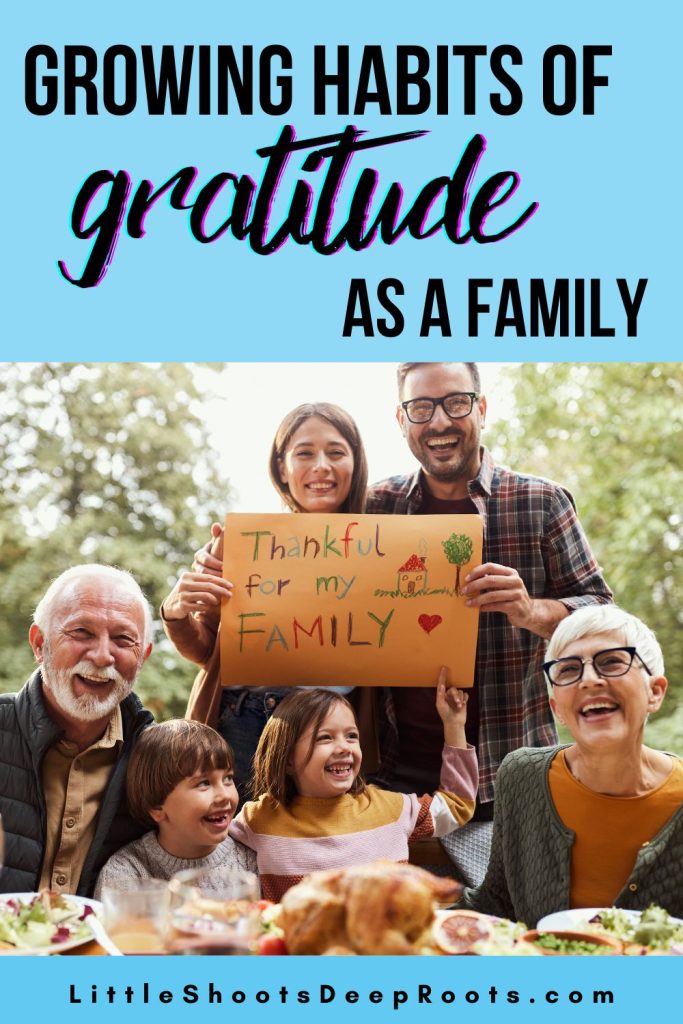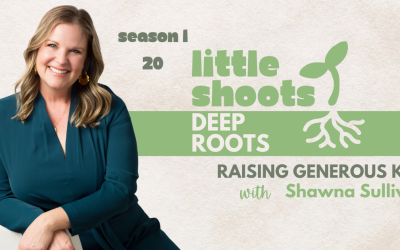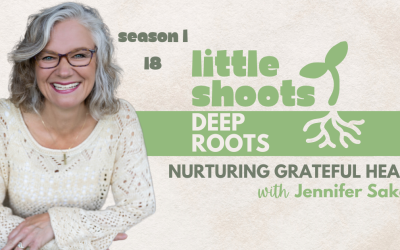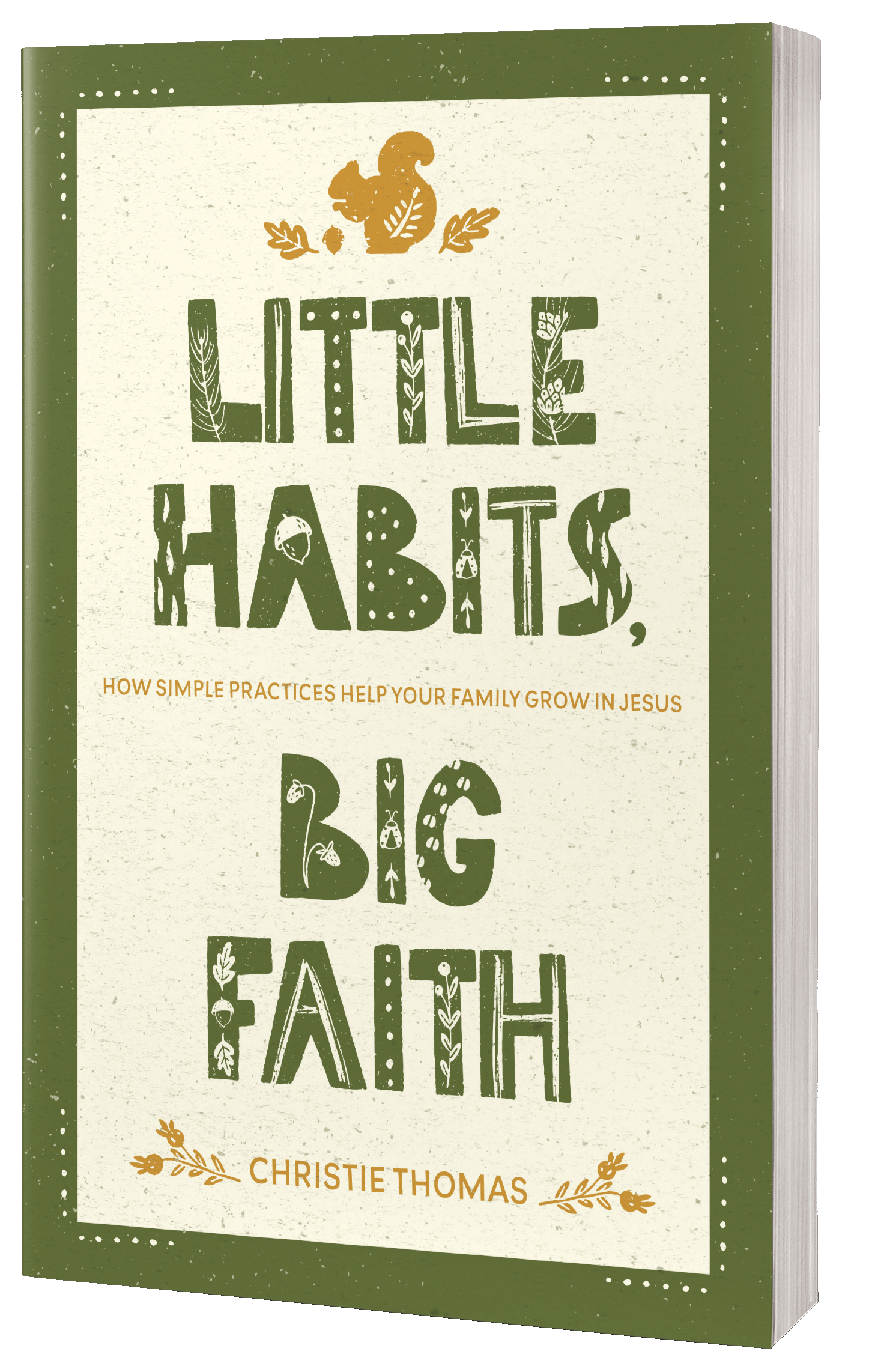When life feels like a storm—whether in your child’s heart or your own—gratitude can be the calm in the chaos.
Gratitude doesn’t erase our worries overnight, but it changes the atmosphere—inside our homes and within our hearts. When we pause to notice God’s goodness, even in small ways, we train our minds toward peace instead of panic.
If you’d like to hear the full story, along with simple, practical ways to build gratitude rhythms into your family life, listen to this week’s Little Shoots, Deep Roots episode. Together, we’ll discover how one thankful thought at a time can grow deeper roots of faith and joy in your home.
Learn how gratitude rewires our minds, reflects God’s design, and can become a life-giving rhythm in your home.
📚 FOLLOW-UP RESOURCES
- Little Habits, Big Faith: find the right habits for this moment in your family life
Subscribe on your favorite listening platform for practical tips, real parent interviews, and encouragement as we become faith gardeners together!

📝TRANSCRIPT
A blast of cold air came in with my son as he stomped through the door.
He dumped his backpack and jacket on the floor, and when I reminded him where they belonged, he glared at me and snarled a reply.
At my rebuke, he began to sob.
I guided my furious, sobbing child to the couch. We sat together. He cried, and I summoned up all the patience I could muster…while also mentally planning supper.
When the sobs finally simmered down, I asked, “What’s going on?”
Through hiccupped breaths, he told me about what had happened on the playground.
There’d been a fight, harsh words, and a friendship that was suddenly declared over.
He hadn’t even been part of it, but watching his classmates end their friendship had tipped him into anxiety.
“What if… what if Sam and I stop being friends?” he choked out through fresh tears.
In that moment, I had a choice.
I could brush it off and move on with my evening. Or I could sit with him and help him process the storm that was swirling in his little heart.
So I asked, “Do you think Sam would do that to you?”
He paused. “No.”
That helped, but his mind was still spinning, like a windstorm whipping worries into a frenzy.
I couldn’t stop the storm. But maybe I could help him quiet it.
So I said, “Okay buddy, we’re going to make a list of things we’re thankful for.”
He sniffled but didn’t resist, so I continued.
“Are you thankful for Sam?”
He nodded.
“Are you thankful for me?”
Another nod.
Then I asked, “What else are you thankful for?”
He hid his face and shook his head. It’s hard to think of good things when your thoughts are storming.
I kept suggesting small things until he finally added, “My brothers. My warm bed. Farts.”
In retrospect, I should have started with farts, because that’s when the giggles began, and suddenly the list came fast and furious.
And as the laughter came, I saw it: his shoulders relaxed. His breathing slowed. His smile returned.
The storm quieted.
That day, I learned that gratitude isn’t just about good manners. It’s about peace.
How Gratitude Helps Anxiety
Anxiety is a lot like fear, but with the volume turned up.
Fear helps us stay safe. But anxiety keeps spinning long after the danger is gone. It whirls and whips around inside our minds until every small worry collides with another. Before we know it, we’re paralyzed with fear.
Gratitude interrupts that storm.
It reframes our thoughts, helping us look up instead of in.
Researchers tell us that fear and gratitude can’t exist in our minds at the same time. Gratitude isn’t avoidance—it’s transformation. It takes what’s swirling inside us and settles it into peace.
Even our bodies respond to gratitude.
When we breathe deeply and thank God for something specific, it activates the part of our nervous system that slows our heart rate, helps us relax, and even improves digestion, helping us move past stomach pain and constipation.
That’s why breath prayers—slow, thankful breathing—are such a powerful way to calm anxiety.
Let’s try this together for a moment.
As you inhale, think of one thing you’re grateful for.
As you exhale, imagine releasing one anxious thought.
Inhale gratitude.
Exhale worry.
Slowly, through this rhythm, the inward storm begins to still.
This process reminds me of Philippians 4:6–7:
“Do not be anxious about anything, but in every situation, by prayer and petition, with thanksgiving, present your requests to God. And the peace of God, which transcends all understanding, will guard your hearts and your minds in Christ Jesus.”
>>Related reading: How To Use This One Verse To Help Your Anxious Child
God doesn’t expect us to magically stop being anxious.
He invites us to bring our worries with thanksgiving—and in that space, His peace takes over.
Thousands of years ago, Paul already knew what researchers are only now confirming:
Gratitude and anxiety can’t coexist.
Growing Gratitude Rhythms
That’s the beauty of gratitude—it’s both a posture and a practice.
Like prayer, it grows when we do it regularly, in community, and over time.
As Ann Voskamp writes,
“Life-changing gratitude does not fasten to a life unless nailed through with one very specific nail at a time.”
We can’t just make one gratitude list and expect life to change.
We need to practice—one list, one thank-you, one quiet moment at a time.
Here are a few rhythms to help your family grow in gratitude:
🌿 Regular Rhythms (daily or weekly moments of pause)
- Start a family gratitude list on the fridge or a bulletin board. Add to it at mealtimes or whenever someone says, “What if…?”
- Keep a small “thankful journal” beside your child’s bed for quick bedtime reflections.
- Download an app designed to help you record gratitudes.
🍁 Seasonal Rhythms (monthly or tied to the calendar)
- At Thanksgiving, make a “gratitude pumpkin”—write what you’re thankful for right on the pumpkin’s surface. One year when we did this, my son begged me to bring ours back long after it had rotted away!
- During Advent, fill a “Gratitude Jar” with notes of thanks as you count down to Christmas.
🌤️ Occasional Rhythms (when you feel overwhelmed or anxious)
- Pause to list five things you’re thankful for when emotions start to rise.
- Practice the breath prayer together: Inhale gratitude. Exhale worry.
These habits don’t have to be big or elaborate—they just need to be consistent.
When gratitude becomes part of your family’s rhythm, peace takes root.
A Gratitude Blessing
That day on the couch, my son’s anxiety wasn’t permanently solved.
But the gratitude list gave us a tool—a way to interrupt the storm.
And over time, as we keep naming God’s goodness, the storms come less often and settle more quickly.
If you’d like more ideas for building simple, grace-filled habits like gratitude, grab a copy of my book Little Habits, Big Faith.
It’s full of easy, non-formulaic ways to grow faith in your family.
Let me pray a blessing over you.
If you’re able, hold out your hands to receive it:
May you and your family discover the gift of gratitude—
not as another thing to achieve,
but as a way to live more abundantly in the presence of Jesus.
Amen.
Thanks for joining me here at Little Shoots, Deep Roots.
Don’t forget to subscribe and leave a review so more families can find simple ways to grow deep roots of faith.
Growing with you,
Christie









0 Comments